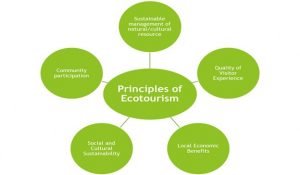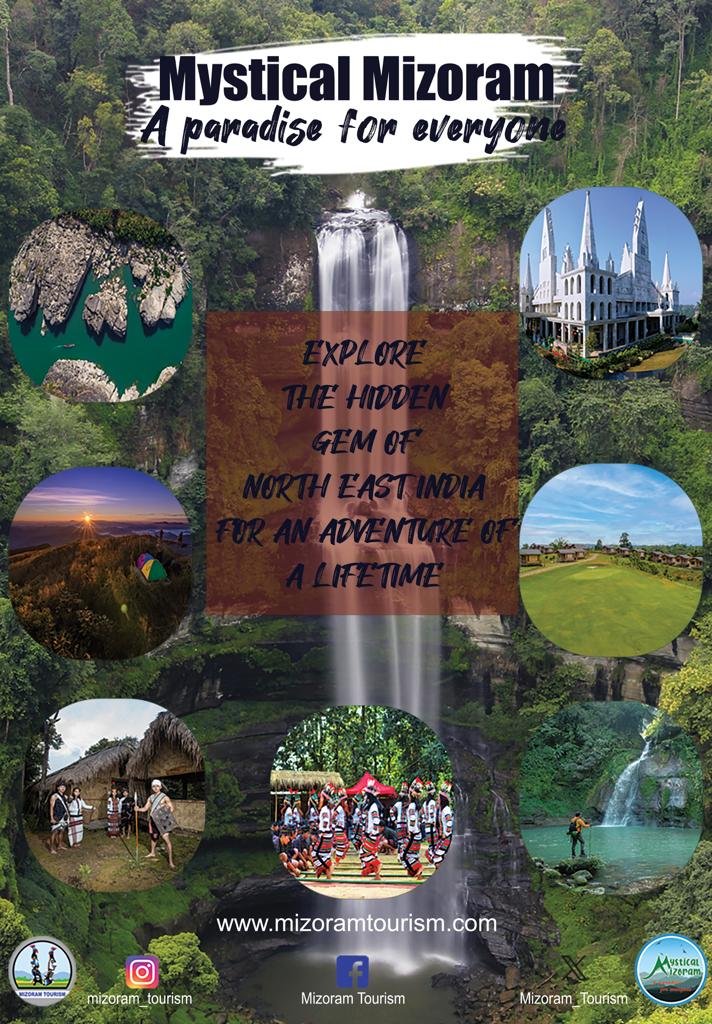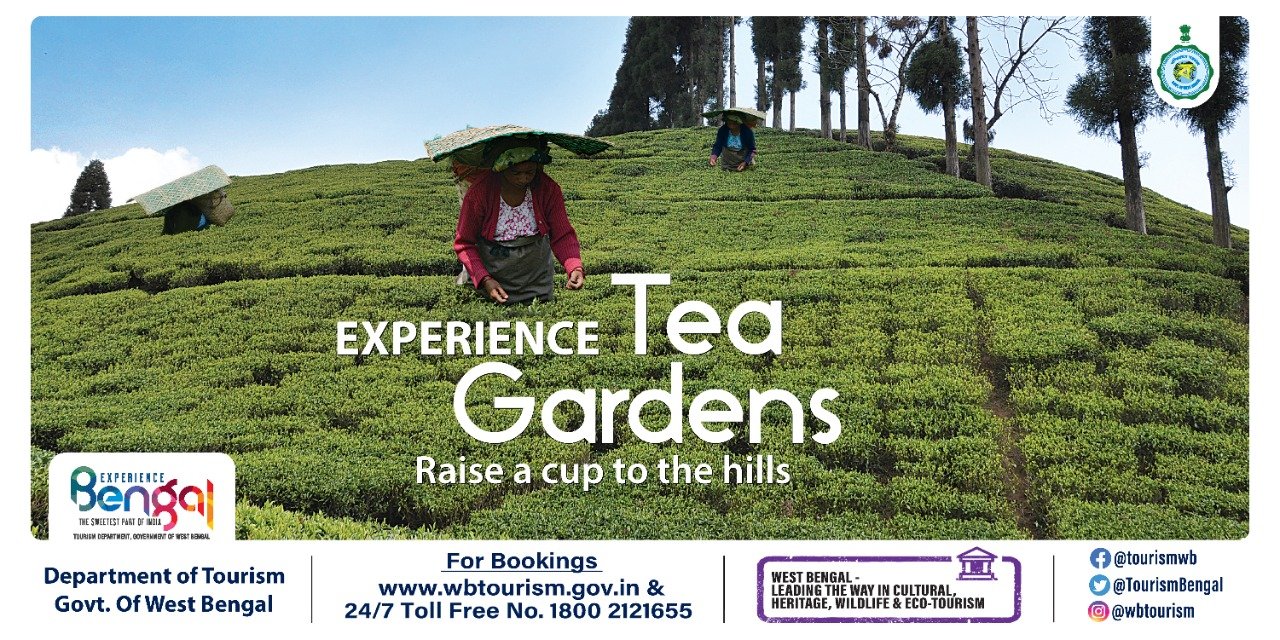
BY RAVINDER PALL SAINI
INDIAN FOREST SERVICE ( RETIRED)
MEMBER, BOARD OF ADMINISTRATION
FOREST RESEARCH UNIVERSITY
DEHRADUN
DEHRADUN, 26 FEBRUARY 2023:

Wholesome natural ecosystems are critical to the ecological well-being of all living entities, and especially for the economic security of people. Ecotourism has the potential to enhance wilderness protection and wildlife conservation, while providing nature-compatible livelihoods and greater incomes for many people living around natural ecosystems. This can help to contribute directly to the protection of wildlife or forest areas, while making the local community stakeholders and owners in the process.

Eco-tourism: Definition:
“Responsible travel to natural areas that conserves the environment and improves the well-being of local people”- Ministry of Environment & Forests
“Tourism that involves traveling to relatively undisturbed natural areas with the specified object of studying, admiring and enjoying the scenery and its wild plants and animals, as well as any existing cultural aspects (both of the past or the present) found in these areas”- WTO.
Objectives of Ecotourism

- Income generation and creating stakes for community residing beside the areas
selected for conservation.
- Generate resources for nature and forest conservation.
- Build environmental and cultural consciousness.
- Build sustainable environmental and financial tourism model for government and
stakeholders.

- Exhibit vividly the immense biodiversity and vibrant multifaceted culture of India to
the world.
Opportunities for ecotourism in India:
The vast and diverse forest cover is >23%.
India is among the top 12 mega biodiversity hot spots of the World.
Varied landscape, forest sub types, unique fauna, and flora
100 National Parks, 515 WL Sanctuaries, 44 biosphere reserves.
The major features are biospheres, mangroves, coral reefs, deserts,
mountains, forests, flora, fauna, seas, lakes, rivers, and caves.
Established Tourism sector with infrastructure for transport and communications.
Creation of livelihoods to forest dependent communities.
It would usher help in generation of funds for conservation needs of the country.
- THE NEED FOR ECOTOURISM
Ecotourism is a ‘responsible travel to natural areas that conserves the
Environment and improves the well-being of the local people. Such tourism is low-impact, educational, and conserves the environment while directly benefiting the economic development of local communities.

Ecotourism, when practiced correctly, is an important economic and educational activity. It has the scope to link to a wider constituency and build conservation support while raising awareness about the worth and fragility of such ecosystems in the public at large. It also promotes the non-consumptive use of wilderness areas, for the benefit of local communities living around, and dependent on these fragile landscapes.
Principle guidelines to be adopted for Ecotourism:
- Adopt low-impact tourism that protects ecological integrity of wilderness areas,
secures wildlife values of the destination and its surrounding areas.
- Highlight the heritage value of West Bengal’s forests, wilderness, and protected
areas.
- Build environmental and cultural awareness and respect.
- Provide livelihood opportunities to local communities.
- Use indigenous, locally produced and ecologically sustainable materials for tourism activities.

The Model Dos and Don’ts for visitors are to be adopted along with calculating carrying capacity of the area under operation. The basis of establishing areas and facilities for Eco – Tourism is to be guided as per Govt of India’s Eco – Tourism policy and amendments and Hon’ble Supreme Court guidelines thereafter.
- Nature Education and Awareness:
Natural Interpretation/education is an educational activity which aims at revealing meaning and relationships of complex ecosystems. It is better done through experiencing wilderness and or through visual display of such relationships. Mere presentation of facts, figures, data, etc. becomes drab and uninteresting and fails to convince tourist.
- Development of Nature Trail:
It is desirable to develop some nature trails at suitable places, say near forest rest houses. Self-guided nature trails bring visitors in close contact with nature and give them a sensation of thrill and adventure. A sketch map may be drawn depicting significant natural features along the trail and may be placed at the starting point to help the visitors to orient themselves.

- Guided Eco-Tourism:
At present, there is no guided tourism in West Bengal except a few eco-guides available in some forest areas. Guided tourism is a specialized task to be manned by an experienced and well-trained eco-guide. Initially it is required to identify the target groups like Students, School children, group of nature lover, JFMCs (Joint Forest Management Committees) members, foreigners, research fellow etc. who can be taken to various places, properly interpreting various animal signs and calls, biotic influences on the wilderness and adverse effect of human activity on the Reserve, on the zone of influence, identifying various birds, local cultures, phenomenon of changing river courses, etc. The guided tourism has the noble role to play in transforming the peripheral nature lovers to the committed ones. They will be our messengers. They will take and spread the message in the society.
The Eco-guides may be selected from among local JFMCs/ Village SHG, educated youth. They may be trained properly to act as Eco-guide. The charges for Eco-guide may be fixed appropriately.
- Signages:
Good Signages help people to find their way, prevent tedious enquires and very often provide interesting information to the tourists. There are 4 different types of Signages that may be installed.
- a) Directional Signages: These Signages may show the way to various places like
Offices, Tourist accommodation and facility, Orientation Centre, Nature Interpretation Centre, Tribal handicrafts & souvenirs’ Sale Centre, Parking site, etc.
- b) Cautioning Signages: The Signages informing the tourist about the acts statutorily prohibited in the spot may be depicted adequately at important locations. These Signages may also inform the tourists about their responsibilities in preserving the serenity of North Bengal.
- c) Orientation Signages: These Signages mainly include Maps, location sketches,
etc. which helps in orienting the tourists. A map of the area showing various zones
and places of tourist interest may be placed at Tourist Offices, Reservation Centres
Bus Stands and Railway Stations & other prominent places.
- d) Interpretive Signages: These may be kept at certain strategic places like along a nature trail, at scenic viewpoints, at places of historical and religious importance, etc. Brief and impressive interpretive Signages may be installed at conspicuous places.
- Audio-Visual programme:
Video films and slide shows on Forests and Wildlife and other interesting features of the area may be shown to tourists at NIC. Films/ Slides shows may also be held at regular interval in schools, tea gardens and villages in the vicinity of selected areas.
- Nature Camp:
The objective of organizing nature camp is to introduce the participants with basic ecological principles through learning by personal experience. It encourages participants to discuss and analyse conservation issues in a constructive and problem-solving manner. Students from schools and Colleges, Science and Nature Club and NGO’s form the main target groups for nature camps.
Camp sites may be places of interest – away from sensitive and vulnerable habitat and safe for walking and halting overnight. Camp accommodation may normally be in tents. Permanent camps may not be constructed. For organizing nature camps, help of experienced NGO’s may be taken. Camps may be organized from October to March. A nature camp may be of 5 – 10 days duration.
- Bird Watching Points:
Bird watching points may be developed in the selected area where seasonal & migratory birds are sighting. Guide and field staff may be given training in bird watching. Binoculars, Guides and Books on bird watching may be provided at large at Visitors Centres and Rest Houses.
- Watch towers and observation stations:
These are built at high elevation points providing wide ranging panoramic views of the landscape around. These towers may also be used for fire monitoring and keeping watch on illegal movement of people and livestock in the protected area. If permanently manned, these towers can act as relaying stations for wireless communication.
- Restoration and repair of heritage sites buildings:
The ancient, historic, and religious buildings need to be cleaned, made safe for visitors, and maintained for tourist visits. These buildings cannot and will not be used for stay of tourists and may be visited during fixed hours only under supervision of accredited tourist guides and staff.
- Use of media for publicity:
Help of the print and electronic media may be taken to promote the tourist potential of the selected area. Publicity wing of Govt. of concerned state and Tourism Department may be involved for ensuring proper publicity of tourist spots selected.
- Participatory approach:
Local villagers specially youth may be involved in the management of Eco-tourism so that they too have a stake in it. Local educated unemployed youth from fringe villages may be engaged as eco-guides after proper training. They may be engaged to run the catering facilities in the tourist lodges. Local vehicles, if available, may be hired for use by tourists. Suggestions from adjoining villages local bodies and villagers as to how they can participate and get benefit directly/ indirectly from tourism may be seemed time to time with a participatory appraisal mode. This is extremely necessary to ensure their support in favour of conservation-based Ecotourism.
- Creation of Nature and Eco-awareness live demonstrations
- i) A tree Arboretum representing all the major species of North Bengal may be created for plain species and hill species in suitable places with help of experts.
- ii) An Orchideum representing variety of Orchids and other Epiphytes may be created in suitable places with help of Botanical Survey of India.
iii) A Bambusetum representing varieties of bamboos & Canes may be established at suitable places with help of Indian Institute of Productivity, Ranchi under ICFRE.
- iv) Eco-awareness Park may be created at suitable places.
- v) A Natural Butterfly Park may be created in suitable places with help of Zoological Survey of India and related NGOs.
- Tourist Amenities:
All tourist amenities may be built around the idea of environmental sustainability and include local architecture using colours and shapes that blend with natural surroundings. Facilities may mandatorily use rainwater harvesting, solar electricity, recycling or composting of garbage, local plant cultivation in lawns and gardens, and provide for natural cross ventilation instead of air conditioners. Self-sufficiency in food through growing local vegetables and provisioning of milk and dairy products from local market may be built into the programmes. Energy saving and water saving devices may be used to their fullest potential.
- Home/Village Tourism:
There is a demand from some forest villages and erstwhile fixed demand holders who are residing since long in Forest areas of selected Eco spots for allowing them to accommodate visitors to these areas in their homes which they would be altering accordingly.
- Role of Tourist Operators and private lodges:
Recently some organized tourist operators have formed associations and are working for taking tourists to Forest areas in somewhat un – organized manner. This aspect needs intervention, and their role should be limited to contact with area administrators amicably and seek bookings of accommodations for their clients. The conduct of tours within the tourist spots should be through the local bodies/villagers and staff of the concerned forest areas.
Similarly, in areas around forest tourist spots lots of private lodges are coming up. This aspect must be regulated keeping in mind the Eco sensitive Zonation of the neighbouring forest areas.
- Legal Framework:
It may be necessary to address legal issues involved in implementation of ecotourism activities in Protected Areas, including aspects such as permissible activities in protected areas, health and safety of visitors, health insurance and risk coverage. Conflict with wild animals and other natural risks involved in adventure tourism may be covered by insurance as provided under law.
Categorisation of eco-tourism areas of the country:
- Red category: core areas of N.P, sanctuaries, ecologically sensitive zones,
- Blue category -buffer areas of N.P & Sanctuaries & reserve forests,
- Green category- land up-to 5 km beyond the periphery of forest,
- Orange category- interesting geological formations.
Model Do’s and Don’ts for Visitors to be adopted:
Model Do’s and Don’ts for the Visitors would be adopted and duly publicized by signages and publicity materials.
>Choose your travel provider based on their eco principles and practices.
>Educate yourself about the destination you are visiting by reading guidebooks and travel articles.
>Be aware of local history, culture, and customs of the locals before arriving. Learn enough knowledge of the language, to be polite. By making the effort to learn even the basics it will be appreciated by locals and enrich your experience.
>Learn about the vital eco-systems before arriving.
>Appreciate the colours and sounds of nature.
>Treat the Protected Area/wilderness area with respect.
>Dress in colours that blend with the natural environment.
>Take pictures, but without disturbing wildlife.
>Observe the sanctity of holy sites, respect local customs.
>Keep a reasonable distance from wild animals, and do not provoke them.
>Dispose waste responsibly: carry back all non-biodegradable litter, and leave.
>Bury the biodegradable materials responsibly in designated sites while in a Wildlife area.
>Campsites litter-free before departing.
>When in a vehicle, remember wild animals have right of way.
>Keep to the speed limit, don’t use the horn, and do not startle animals.
>Do not talk loudly or play loud music.
>Do not get out of the vehicle or approach wild animals.
>Do not approach animals closer than 15 m or disturb them while they are resting.
>Do not take away flora and fauna in the form of cuttings, seeds, or roots.
>Do not feed, shout, tease, chase, disturb or molest wild animals.
>Do not light fires, or smoke inside protected areas. Accidental forest fires cause irreparable damage.
>Do not pollute water body.
>Register at the Forest/Wildlife Check Post before entering a Wild Life area.
>Do not trek and camp outside designated nature trails.
>Engage trekking service providers who possess the certificate of identification.
>Do not deface or damage rocks, tree trunks or government infrastructure or facilities.
>Carrying of guns, firearms, inflammable materials would be strictly prohibited, as per the
>Do not commit any other act that may be injurious to forests, water bodies, plants, animals or disturb the natural tranquility of such sites or become a nuisance to fellow trekkers.
Impact of Eco-tourism in Protected Areas (PAs)
Positive
>Economic welfare and livelihood of local villagers.
>Enables constant surveillance.
>Facilitates participatory approach.
Negative
>Additional burden on PA Managers
>Deterioration & Disturbance in PAs
>Abetment to Illegal activities
>Pollution

Advertisement:




























Add Comment